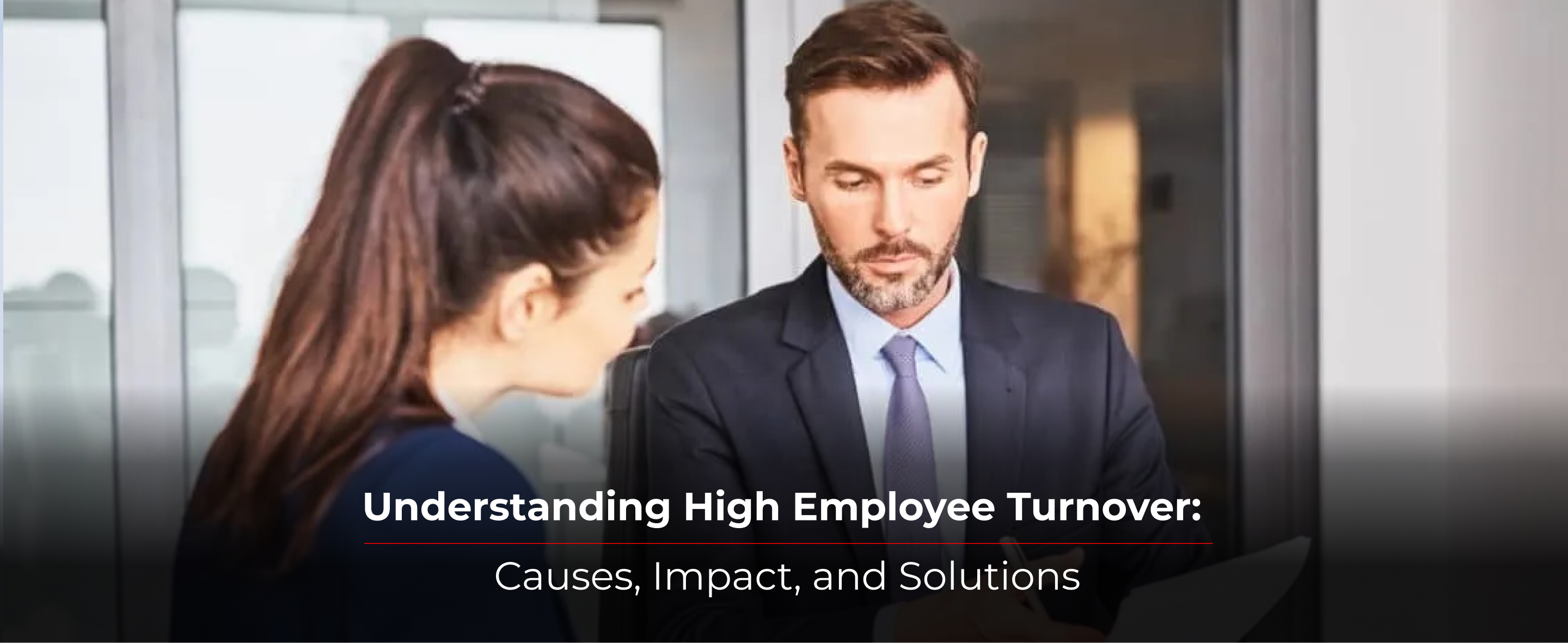
High employee turnover is more than just a talent issue—it’s a direct threat to business performance, culture, and continuity. For executive teams and HR leaders, understanding the root causes of turnover is the first step toward building a resilient, engaged workforce.
In today’s hyper-competitive business landscape, retaining top talent is as critical as acquiring it. This blog explores why high employee turnover happens, its impact on organizations, and what leaders can do to fix it.
What Is High Employee Turnover?
Employee turnover refers to the rate at which employees leave an organization over a specific period. High turnover means more employees are leaving than expected, creating instability in teams, loss of knowledge, and higher recruitment and training costs.
Why High Turnover Matters
- Productivity: Teams constantly adjust to new hires or cover gaps.
- Costs: Hiring, onboarding, and training new talent adds up.
- Culture: Low morale spreads when good employees leave frequently.
- Client Satisfaction: Frequent transitions disrupt service continuity.
- Leadership Reputation: High attrition often signals poor management or misalignment.
Common Causes of High Employee Turnover
- Poor Leadership or Management Style: Micromanagement and lack of communication drive disengagement.
- Lack of Growth Opportunities: Without a clear path, employees seek development elsewhere.
- Inadequate Compensation or Benefits: Transparent markets make pay gaps obvious.
- Toxic Workplace Culture: Conflict and exclusion lead to burnout and exits.
- Work-Life Imbalance: Overwork and rigid schedules push people out.
- Mismatch Between Role and Skills: Poor hiring leads to role dissatisfaction.
Executive Insight: How Turnover Affects Leadership
For leadership teams, constant turnover creates long-term damage:
- Strategic projects stall due to team instability
- Leaders spend more time hiring than innovating
- Team trust erodes, especially if exits are poorly managed
- Reputation suffers among candidates and competitors
How to Reduce Employee Turnover
- Hire for Fit, Not Just Skill: Use assessments and values-based hiring.
- Invest in Leadership Development: Train managers to lead with empathy and clarity.
- Prioritize Career Pathing: Offer structured growth and mentoring.
- Create a Feedback-Driven Culture: Use surveys, 1:1s, and stay interviews.
- Build Flexibility into the Culture: Hybrid models and wellness support matter.
- Recognize and Reward Often: Small recognitions improve retention.
- Benchmark Compensation: Keep salary structures market-relevant.
What High Turnover Signals to Executive Search Firms
At Shrofile Executive Search, high turnover indicates deeper strategic gaps:
- Poor alignment between C-suite and vision
- Gaps in leadership capability or cultural fit
- Need for transformational leaders to restore trust
Final Thought: Turnover Is a Symptom—Fix the Cause
Instead of reacting to attrition, organizations must ask:
- Are we creating a culture employees want to grow in?
- Are our leaders enabling or blocking progress?
- Are we truly listening to our people?
At Shrofile, we help you find leaders who stay, inspire, and scale.
Need Help Building a Retention-Ready Leadership Team?
Let Shrofile help you hire leaders who drive performance and retention.
Frequently Asked Questions (FAQs)
Q1: What is considered a high employee turnover rate?
A turnover rate above 20% is generally considered high, but it varies by industry. For example, retail and hospitality often have higher average turnover than tech or finance sectors.
Q2: How does high employee turnover affect a company?
It leads to loss of institutional knowledge, decreased morale, higher hiring and training costs, and reduced productivity. Over time, it can damage employer reputation and client relationships.
Q3: What are the most common causes of high turnover?
Some of the top causes include poor leadership, lack of career growth, inadequate compensation, burnout, toxic workplace culture, and lack of recognition or flexibility.
Q4: How can leaders reduce employee turnover?
By improving management practices, offering career development, maintaining competitive pay, fostering an inclusive and healthy workplace culture, and actively listening to employee feedback.
Q5: Is some turnover healthy?
Yes. A moderate level of turnover allows fresh talent and ideas to enter the organization. However, chronic high turnover is a red flag and indicates deeper organizational issues.
Q6: How can executive search firms help with turnover issues?
Executive search firms like Shrofile help organizations identify and hire leaders who are not just qualified, but culturally aligned, strategic, and capable of improving retention through effective leadership.
Let Shrofile Executive Search Find You Transformational Talent
Does your company need a dynamic and forward-thinking leader? Get in touch today and learn more about how we find and place transformational talent.
For more Updates
Website –www.shrofile.com
Facebook page –https://www.facebook.com/shrofile/
Twitter page –https://twitter.com/shrofile
Linkedin Page –https://www.linkedin.com/company/shrofile/
YouTube Page –https://www.youtube.com/channel/UChVfJqpTjx1dHJ2xq_dMtAw
Instagram Page –https://www.instagram.com/Shrofile/





